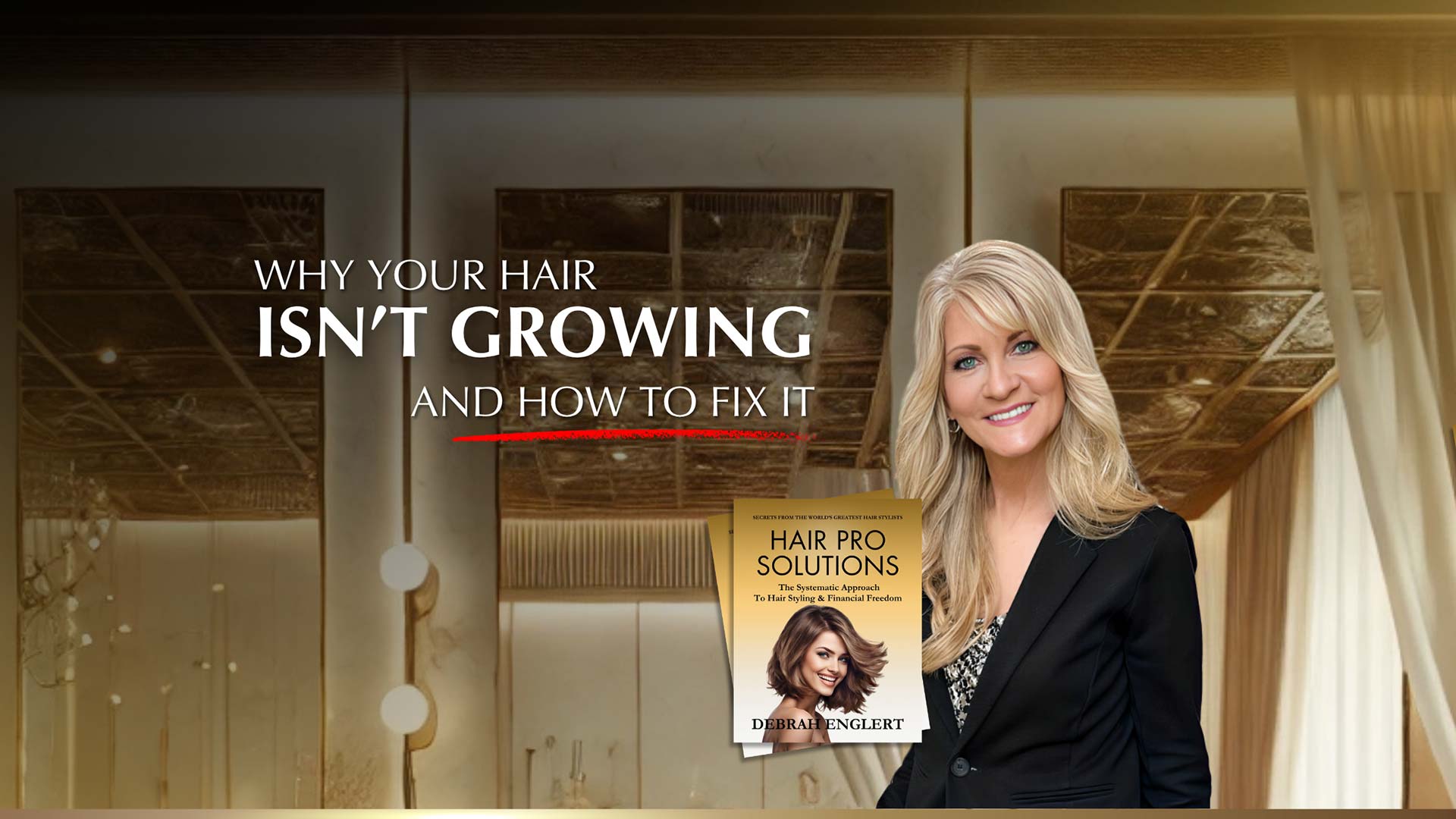WHY YOUR HAIR ISN’T GROWING (AND HOW FIX IT)

You’ve been waiting, hoping, and maybe even praying for longer hair, but those inches just aren’t showing up. If your hair feels like it’s stuck at the same length, you’re not alone. Many women think their hair “won’t grow,” but in truth, it probably is—you just can’t see it.
The key? Understanding what’s happening beneath the surface, and how to fix it.
First, Know This: Your Hair Is Growing
Unless you’re experiencing a medical condition like alopecia or severe nutritional deficiency, your scalp is producing new hair every day. The problem usually lies in one of these areas:
- Breakage = it grows, then snaps off
- Poor scalp health = hair grows slower
- Stress or hormones = growth cycle disruption
- Harsh styling = mechanical or chemical stress
Let’s break it down and fix it—step by step.
1. Breakage Is Canceling Out Your Growth
If your hair feels like it’s not getting longer, chances are the ends are breaking off as fast as the roots are growing.
Signs of breakage:
- Frayed or split ends
- Short, wispy pieces near your crown
- Lots of hair on your pillow or clothes (not just the brush)
Here’s how to fix it:
- Trim every 8–12 weeks
- Deep condition weekly
- Avoid high heat and tight styles
- Switch to satin pillowcases and microfiber towels
PRO TIP: Hair growth starts at the scalp, but length retention happens at the ends. Protect them like gold.
2. Scalp Health = Hair Health
Think of your scalp like soil: if it’s dry, inflamed, or clogged, your follicles can’t thrive. A healthy scalp leads to faster, fuller growth.
What to do:
- Massage your scalp 5 minutes daily to stimulate circulation
- Exfoliate weekly with a scalp scrub or apple cider vinegar rinse
- Use lightweight oils like jojoba or tea tree blends to balance sebum
- Avoid heavy silicones or pore-clogging ingredients
A clean, stimulated scalp = an ideal environment for growth
3. Your Hair Is Starving (Literally)
Hair growth demands a lot from your body. If you’re low on nutrients, your body prioritizes vital organs—not hair.
Feed your follicles:
- Protein: Builds keratin (the hair’s core structure)
- Iron & Zinc: Prevent shedding
- Biotin & B Vitamins: Promote growth and thickness
- Omega-3s: Enhance scalp hydration
Eat whole foods, drink water, and consider supplements only if advised by a professional.
4. Stress and Hormones Could Be the Hidden Culprits
Hair growth follows a 3-phase cycle: growth (anagen), rest (telogen), and shedding (catagen). But guess what? Stress, hormonal changes, childbirth, menopause, and even crash diets can shock your body into shedding or stalling.
Signs of stress-induced hair issues:
- Hair comes out in clumps or rapidly thins
- You notice shedding 2–3 months after a stressful event
- Hairline thinning or overall volume loss
What to do:
- Get bloodwork to check hormones and nutrient levels
- Practice stress relief: journaling, yoga, deep breathing
- Stick to gentle hair routines—avoid aggressive styling
- Be patient—your cycle will reset with time
Hair sheds today based on what your body experienced months ago—healing takes time.
5. Product Overload Might Be Hurting More Than Helping
Too many products leads to buildup. Buildup leads to suffocated scalp. Suffocated scalp results in stalled growth.
Simplify your routine:
- Gentle, sulfate-free shampoo (2–3x/week)
- Hydrating conditioner
- One leave-in or oil for ends
- Lightweight scalp serum (if needed)
Less is more—clarity creates consistency.
6. You May Be Missing Growth-Boosting Treatments
If you want to give your hair a nudge, some natural growth stimulants can help boost the process.
Growth-stimulating options:
- Rosemary oil (shown in studies to rival minoxidil)
- Peppermint oil (stimulates blood flow)
- Castor oil (high in ricinoleic acid to nourish follicles)
- Scalp massage tools or derma rollers (use with care)
NOTE: Be consistent. These treatments take 3–6 months to show results.
It’s Not That It Won’t Grow—It’s That It’s Being Held Back
Your hair is resilient. Growth is its natural rhythm. When you focus on the right root causes and commit to nurturing, not punishing, your strands, you’ll see progress.
So if your hair isn’t growing the way you want, stop blaming your genes. Start looking at your routine.
Because the real question isn’t “Why won’t it grow?”
It’s: “What can I start doing today to help it thrive?”
You’ve got this—and your next good hair day is already growing in.
Have questions about your hair type or damage level?
Email us with questions or book a virtual consultation with a certified Hair Pro Consultant.
